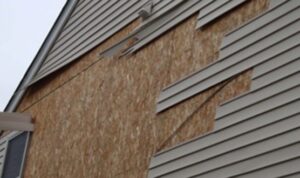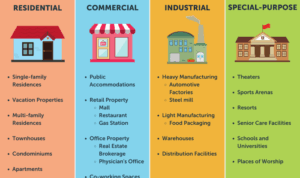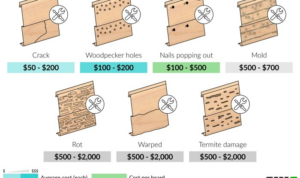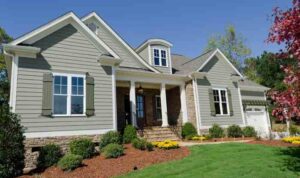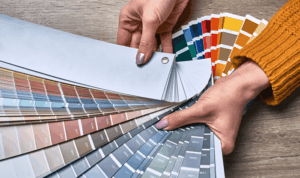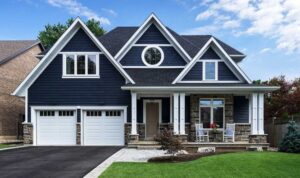Embark on a journey to transform your home with a siding remodel. Discover the benefits, types of materials, process, color options, and energy efficiency considerations in this comprehensive guide.
Siding Remodel Benefits
Remodeling the siding of your home can bring a host of benefits that go beyond just aesthetics. Here are some advantages of investing in a siding remodel:
Enhanced Curb Appeal
Updated siding can completely transform the look of your home, giving it a fresh and modern appearance. Whether you opt for a new color, texture, or style, improved curb appeal can make your home stand out in the neighborhood.
Increased Property Value
By investing in a siding remodel, you can potentially increase the overall value of your property. High-quality siding that is well-maintained can attract potential buyers and fetch a higher selling price if you decide to put your home on the market.
It's a worthwhile investment that can pay off in the long run.
Types of Siding Materials
When it comes to siding materials, there are several options available, each with its own unique characteristics and benefits. Let's compare different siding materials like vinyl, wood, fiber cement, and metal to help you make an informed decision for your siding remodel project.
Vinyl Siding
Vinyl siding is a popular choice due to its affordability and low maintenance requirements. It is durable, resistant to rot and insect damage, and comes in a variety of colors and styles. However, extreme temperatures can cause vinyl siding to warp or crack over time.
Wood Siding
Wood siding offers a natural, rustic look that many homeowners find appealing. It is versatile and can be painted or stained to achieve the desired aesthetic. However, wood siding requires regular maintenance, including staining or painting to protect it from moisture and rot.
Fiber Cement Siding
Fiber cement siding is a durable and low-maintenance option that mimics the look of wood or stucco. It is resistant to fire, rot, and insects, making it a long-lasting choice for homeowners. While it may be more expensive upfront, fiber cement siding can save you money in the long run due to its durability.
Metal Siding
Metal siding, such as aluminum or steel, is known for its strength and longevity. It is resistant to fire, rot, and insects, making it a durable option for homes in harsh climates. Metal siding is available in a variety of colors and styles, offering a modern and sleek appearance to your home.
Siding Remodel Process
Before diving into a siding remodel project, it is essential to understand the steps involved, the importance of proper preparation, and how to select a reputable contractor to ensure a successful outcome.
Steps Involved in a Siding Remodel Project
When embarking on a siding remodel project, the following steps are typically involved:
- Assessment of current siding condition and needs
- Selection of siding materials and colors
- Obtaining necessary permits
- Preparation of the work area
- Removal of old siding
- Installation of new siding
- Finishing touches and cleanup
Importance of Proper Preparation
Proper preparation is crucial before starting a siding remodel project as it sets the foundation for a successful outcome. It includes:
- Thoroughly assessing the current siding condition to identify any underlying issues
- Choosing the right siding materials that suit the climate and style of your home
- Obtaining the necessary permits to ensure compliance with local regulations
- Cleaning and prepping the work area to facilitate a smooth installation process
Tips for Selecting a Reputable Contractor
When selecting a contractor for your siding remodel, consider the following tips:
- Ask for recommendations from friends, family, or neighbors
- Check online reviews and ratings of potential contractors
- Verify licenses, insurance, and certifications
- Request detailed written estimates and timelines
- Communicate openly and clearly about your expectations
Siding Color and Design
When it comes to remodeling the siding of a home, choosing the right color and design can make a significant impact on the overall aesthetic appeal. The color and design of the siding can enhance the architectural style of the house and create a visually appealing exterior.
Impact of Siding Color
Choosing the right color for your siding can completely transform the look of your home. Lighter colors can make a house appear larger and more inviting, while darker colors can add a sense of drama and sophistication. It's essential to consider the existing color palette of your home and the surrounding landscape when selecting a siding color.
Trending Siding Design Options
Vertical Siding
Vertical siding is a popular choice for modern and contemporary homes. It can create a sleek and streamlined look, adding a unique touch to the exterior of the house.
Shake-Style Siding
Shake-style siding mimics the look of cedar shakes and adds a rustic charm to a home. It is a versatile option that works well with various architectural styles.
Choosing the Right Siding Color
When choosing a siding color, consider the architectural style of your home. For traditional homes, neutral tones like beige, gray, or white are timeless choices. If you have a more modern home, bold colors like navy blue or charcoal can make a statement.
It's also important to take into account the roof color, trim color, and landscaping when selecting a siding color to ensure cohesiveness in the overall design scheme.
Energy Efficiency and Insulation
Improving energy efficiency in a home through siding remodels is a crucial aspect of creating a more sustainable living space. By upgrading the insulation properties of the exterior walls, homeowners can reduce energy consumption for heating and cooling, leading to lower utility bills and a reduced carbon footprint.
Role of Insulation in Siding Materials
Insulation plays a vital role in enhancing the thermal performance of siding materials. By choosing siding options with high-quality insulation properties, homeowners can ensure better temperature regulation inside the home. This not only improves comfort levels but also reduces the strain on HVAC systems, leading to long-term energy savings.
Eco-friendly Siding Options for Energy Savings
- Fiber Cement Siding: Made from a mixture of wood fiber, cement, and sand, fiber cement siding is a durable and eco-friendly option that offers excellent insulation properties.
- Vinyl Siding with Insulation: Vinyl siding with built-in insulation provides an extra layer of thermal protection, helping to reduce heat transfer and energy loss.
- Wood Siding: When sourced from sustainable forests, wood siding can be a renewable and energy-efficient choice. Opting for engineered wood products can further enhance insulation capabilities.
Final Thoughts
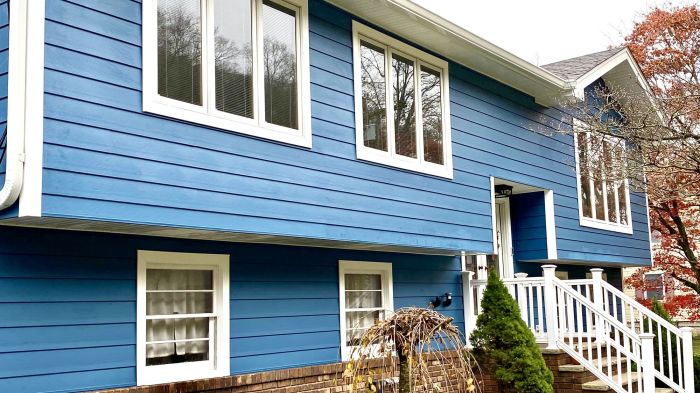
In conclusion, a siding remodel is not just about improving aesthetics but also increasing property value and energy efficiency. Take the first step towards a beautiful and efficient home with these insights and tips.
Frequently Asked Questions
What are the benefits of siding remodel?
Remodeling siding can enhance curb appeal, increase property value, and improve energy efficiency.
How do I choose the right siding material?
Consider factors like durability, maintenance requirements, aesthetic appeal, and cost when selecting siding materials.
What steps are involved in a siding remodel project?
The process includes proper preparation, selecting the right contractor, and choosing the design and color of the siding.
How does siding color impact the overall look of a home?
Siding color can significantly influence the appearance and style of a house, complementing its architectural design.
Can siding remodels contribute to energy efficiency?
Yes, siding remodels can enhance energy efficiency by improving insulation and choosing eco-friendly siding options.

